Growing plants in your yard is not easy. But if you can make the task easy, why shouldn’t you resort to clever tricks? The DIY Raised Garden Bed (MyDailyRandomness Blog) is one such trick that will definitely help. Besides the improved quality of the soil as well as better drain access benefited from a raised garden bed, you can still have issues reaching some of your plants; and that was the whole point of having a raised garden bed in the first place – easier access and less effort. That’s why a garden bed in a U-shape is simply brilliant! With this instead of a large rectangle, you can reach across the entire raised garden with less effort. Here are the tools you will need for the project: a circular saw, a power drill/driver, a hammer and a trowel. Grab your pine and cedar planks, see the photo-guideline and you should be on your way to building the perfect raised garden bed. The U-shape is a good direction but there are other ideas and shapes you can implement. Take a closer look and pick your favorite!

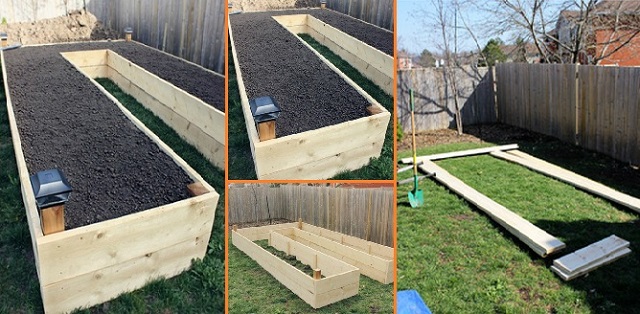
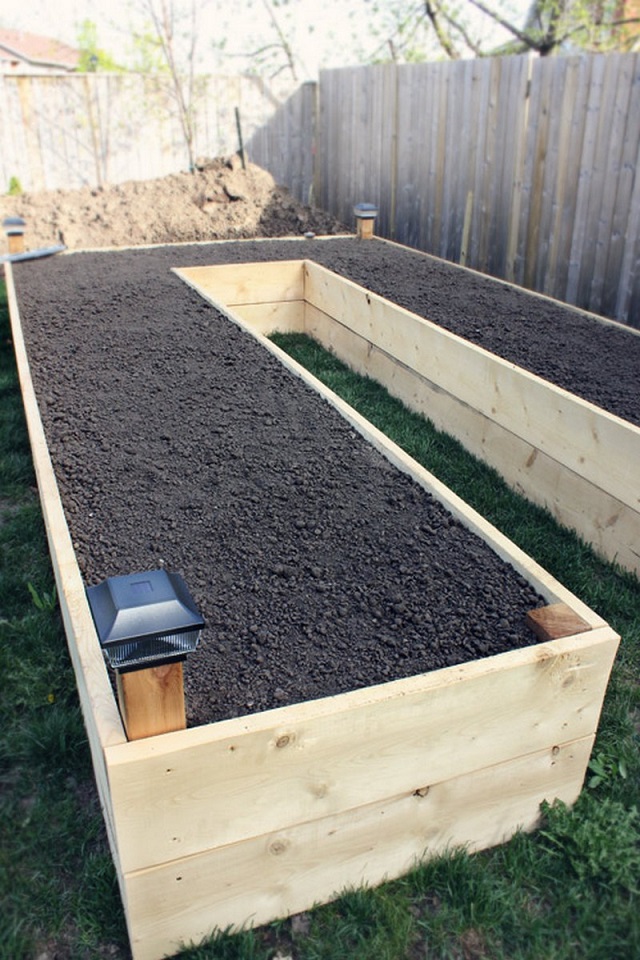
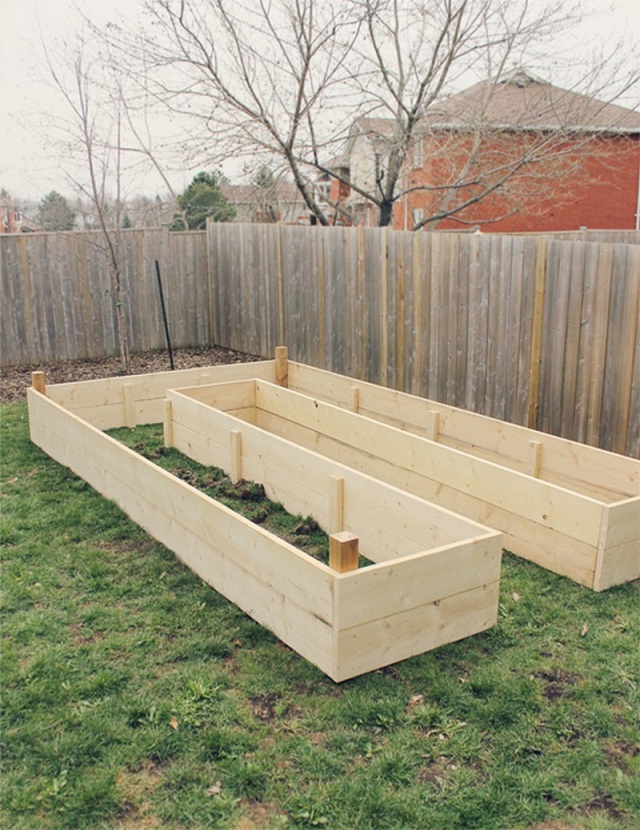
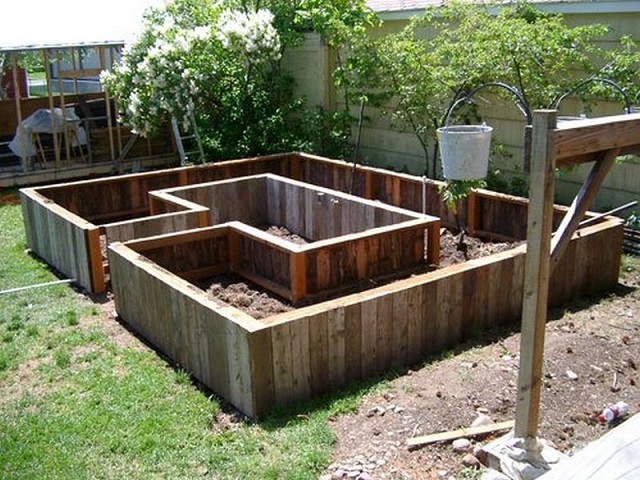
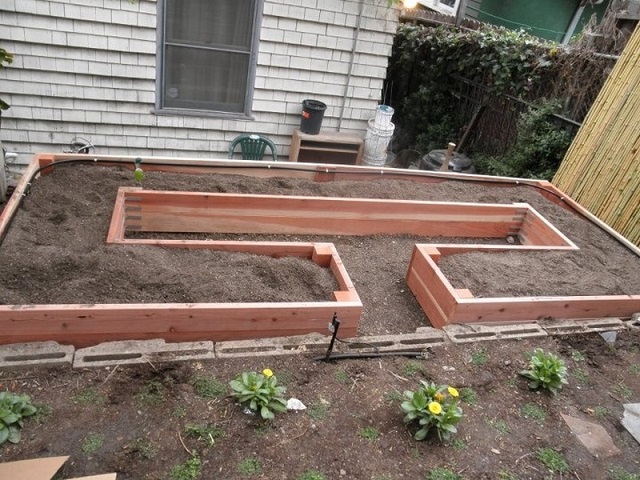

















I took this as inspiration and made a serpentine garden bed…. like an S with a couple of more jogs top and bottom. Love the inspiration!
Great idea – my raised garden beds are definitely too close together – this design is so much better! I really like the idea – thanks!
ya oughta make the walkways as wide as your lawn mower…
I like the idea of getting the plants elevated where they would be easier for someone like myself with a bad back to tend to. One thing I would do different is use lumber that will be resistant to rot.
Treated lumber is not recommended for gardening due to the arsenic compounds leaching into the soil and then into the plants you intend to eat. Cedar is a good choice but it is expensive. Standard pine/spruce/fir would last a fairly long time, being exposed on the exterior would help keep it dry but you would tend to develop rot along the bottom where the wood comes in contact with the ground.
Arsenic is no longer used in pressure treated wood.
Treated lumber is fine to use for the raised beds. We recommend lining the inside walls of the raised bed with plastic (attach with staple gun) …. to prevent the wood from drawing out the needed moisture in the soil and to prevent any potential contaminants in the wood from leaching into the soil. Do NOT line the bottom of the beds, however; you want to keep proper drainage into the ground below the beds.
In our community garden, we have 20 4’x8′ raised beds (16 are 12″ deep and 4 are 24″ deep) These depths are easily constructed and easy for planting and tending.
Arsenic has not been used for quite some time now.
My sister uses concrete board- HardieBacker or similar- instead of wood. I don’t remember, they may use just a bit of wood at the top to hold it together. At any rate, that should last a long time with little to no issues.
Kevin, I was thinking the same thing. I was needing something about waist high. Wonder if they offer that?
Carolyn, You wouldn’t want to have the top of the raised bed at waist height – as the produce on the plants would then be a stretch to reach. A two-foot to two-and-a-half foot bed means a bit of bending to plant and weed —- but puts the produce within easy reach. We’ve found that the 24″ beds work well for some of our elderly and disabled gardeners. (Our community garden has 20 4’x8′ raised beds (16 are 12″ deep and 4 are 24″ deep).
If using treated wood – lining the inside walls with plastic prevents the wood from drawing the moisture out of the soil, and prevents any possible chemicals in the wood from leaching into the soil. (NOT lining the bottoms!!! you want good drainage into the ground!)
One thing I learned to do when making a raised bed garden is to put wire mess on the bottom to prevent the gophers from digging into the plant bed and eating the plants.
I am so glad I do not have to deal with those little pests any more. I had so much trouble with them in California. Here in Australia we have other problems but not those. I used to flush all my kitty litter down the holes and it worked.
Those r perfect gardens and then in the fall you could place some rebar stakes in the outer perimeter and make a hoop house and cover with the plastic to keep your plants growing longer ru the winter. Good ideas! Thanks for sharing Marie
This is a great idea….loving it. But how to you manage wood infection from water and soil.
A garden bed is the best way to begin improving plenty of fresh vegetables and flowers right in your own garden. By this you can enhance you home very wonderful. there are variety of varieties of work .
Or use a weed whacker
I would think to prevent wood rot, where the boards meet ground, perhaps the bed could be raised an inch off of the ground. If one placed oval shaped River Rock ( whatever your choice ) in that inched gap, then that gap would be filled in, keeping the boards away from the continuous damp ground.
The rocks will still leave gaps. In those purposed gaps, I would plant succulents, such as ‘hens and chicks ‘ into the exposed gaps.
Wire meshing could be placed on the bed floor coming out a foot extra. In that extra foot of wiring, strategically lay rock and your succulent plants ( hens and chicks. Cut that extra wire verticaly as you go, in increments of 12 inches or more. That way you can place them as you like, easier to handle too. After each foot is filled in, wrap that 12 extra inches that you have, to work with, up and and securely attach to sides of bed. Using heavy duty staples…
The roots of the hens and chicks will wrap attach to the wire, stabilizing your garden art.
What do you use for soil
1/2 mushroom compost and 1/2 black dirt.
Sorry my friends but some of your info on pressure treated wood is old and misguided. The wood treatment industry in the US, Canada, Europe and Japan for several years now, has been changed as of January 2004. The new ingredients in (PTW) is used in breweries, dairies & found in moist antiseptic wipes, just to name a few.
Copper azole (CA,
Ammoniacal copper zinc arsenate (ACZA) is a CCA alternative with a limited range of applications, mostly in the marine environment. Amine copper quat (ACQ) is an alternative to CCA which was originally patented in Canada and has been commercially available in the USA, contains copper as the primary fungicide and a quaternary ammonium compound (quat) as the secondary fungicide.
Quats are surfactants and some types are used to clean pipes in breweries and dairies. Others are found in moist antiseptic wipes and eyewash, This is a copper-based preservative with an organic secondary fungicide. Acid copper chromate and copper citrate are other CCA alternatives are available in the U.S.
New pressure treated wood is safe for gardens but, if you have a concern you can apply plastic poly to the garden side of the wood so the visual effect is still there.
I hope this helps
Be sure to test out the height of your bed. If you have any back problems, bending only part of the way over to …pick beans, for instance…for an extended time is worse for me than bending down to the ground.
I sit on a garden bench to work in the raised beds. Also I grow things on fences (tomatoes, cucumbers, pole beans, sugar snap peas – even small squash and melons if you’re willing to make “hammock” supports for the fruits). Easy on bad backs and old folks.
I love to garden but haven’t for many years due to health problem. But with these ideas I think I will be able to give it after try just need to get the plans to a few thanks again
Thank you so much for sharing my DIY raised garden bed! I’ve had the bed for almost 4 years now and I wouldn’t change a thing about it! Happy gardening everyone!
Concrete has poison
I wonder if they removed the concrete or just installed the garden over it??
Arsenic was used to treat lyme disease back in the day and worked better than today’s methods. And only large amounts created issues. LOL But copper also is known to help with arthritis which is another issue for those with Lyme. I would not use concrete as not only is it poison, but also very lime heavy and you’d have to add something to the soil to counter the effects.
I do agree with all of the ideas you’ve offered for your post.
They’re really convincing and can certainly work.
Nonetheless, the posts are very brief for beginners. May just you please lengthen them a bit from subsequent time?
Thanks for the post.